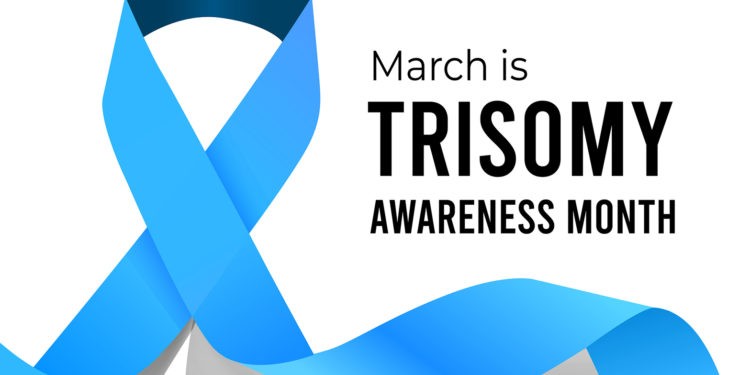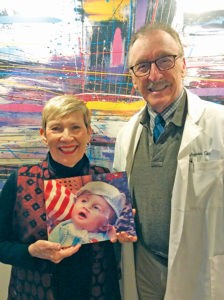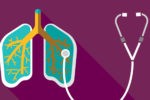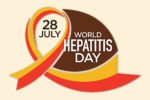March is Trisomy Awareness

Written by Ann E. Butenas
Faith, hope, and love are equally as important as research is for all forms of trisomy.
 When Steven Cantrell and his wife Peggy welcomed their son Ryan into the world in 1985, they received some unexpected news after his birth. Ryan was born with Trisomy 18.
When Steven Cantrell and his wife Peggy welcomed their son Ryan into the world in 1985, they received some unexpected news after his birth. Ryan was born with Trisomy 18.
“This all came as a surprise to us, and we didn’t know he had it when he was born,” recalled Dr. Cantrell, an optometrist from St. Louis, Missouri. “However, this is what set everything in motion for us.”
But, first, they had to understand what trisomy was all about. With March designated as Trisomy Awareness Month, it creates the perfect opportunity for increased understanding and awareness about this disorder.
What is trisomy?
According to the trisomy.org website, this condition is defined as such:
Genes are the blueprint for our bodies. Almost every cell in the body has a copy of the blueprint, stored inside a sac called the nucleus. Genes are beaded along chromosomes, which are tightly bundled strands of the chemical substance deoxyribonucleic acid (DNA). Humans usually have 23 pairs of chromosomes, with two sex chromosomes that decide gender and 44 chromosomes that dictate other factors, such as growth and function.
A chromosome disorder is caused by an alteration in the number or genetic structure of chromosomes. Trisomy (‘three bodies’) means the affected person has 47 chromosomes instead of 46. Down syndrome, Edward syndrome and Patau syndrome are the most common forms of trisomy. Children affected by trisomy usually have a range of birth defects, including delayed development and intellectual disabilities.
Trisomy 18, the one with which the Cantrell’s son was born, is a chromosome disorder that affects roughly one in 7,000 live born infants. With trisomy 18, there is the presence of an extra #18 chromosome. Trisomy 13, on the other hand, occurs in roughly one in every 10,000-25,000 live born infants. This occurs when there is a presence of an extra chromosome #13.
The organization called SOFT (Support Organization for Trisomy 18, 13, and related disorders), is a long-standing organization started by a parent of a child born with trisomy as a means to offer families and professionals access to information about research, conferences, and opportunities to “honor our children whether in our arms or in our hearts.”

The Cantrell Family and SOFT
“Unlike when Ryan was born, there is now more inclusive health care, research and awareness, making for improved intervention,” said Dr. Cantrell. “Heart issues, for example, are common with kids born with trisomy 18, and doctors around the country now can intervene and perform heart repair surgery when needed.”
Sadly, some children die at birth; others may live a couple of weeks; but some may go on to live into their 20s and 30s, which is more likely now due to advanced research, available medical interventions, and expanded resources.
The Cantrells attended the inaugural SOFT conference in 1987 in Salt Lake City, Utah. Unfamiliar with the organization before this event, this conference connected them to one of the founding parents and medical advisor of the organization.
“The doctors back then did not know much about this,” said Dr. Cantrell. “At that conference, it was nice to meet with other parents, discuss therapies, and bond with the families. When a child has trisomy, it can make you feel lonely, especially when there are no answers, and no one wants to help. Today, however, the organization has grown considerably, and we are looking forward to our national meeting next summer in Greeneville, South Carolina.”
As past president of the organization, Dr. Cantrell is extremely pleased with the progress made in the trisomy arena.
“During these conferences, we have workshops with several doctors in cardiology, orthopedics, and other medical areas that are important to the kids,” he explained. “We also conduct workshops on grief and coping.”
Additionally, SOFT supports families prenatally and offers suggestions, providing parent-to-parent support and arming them with important and vital information for this journey they now find themselves on. The loneliness and isolation the Cantrells felt when their son was diagnosed does not have to be an issue for parents of kids with trisomy today. Parents can look to each other for the continued support they need. One member of the SOFT organization, Ann Barnes, RN, wrote a book for parents about trisomy 18 and 13, which is available as a free downloadable care book on the organization’s website. Dr. Cantrell indicated the population of SOFT by far consists of families with children afflicted with trisomy 18, 13, and 9. Trisomy 18 is the most common form, followed by 13, and then 9.
No matter the diagnosis, however, the relationships are an integral part of the path upon which these parents now find themselves.
“We have developed lifelong relationships through the organization and are still active in it so we can pay it forward in terms of the support we have received,” indicated Dr. Cantrell. “We want parents to know they have a resource.”

Keeping an Eye on Progress – The Cantrell Contribution
When Ryan was born, Dr. Cantrell noticed his son was extremely light sensitive and had seizures as a result. Since then, it has been Dr. Cantrell’s passion to find a component to focus on photo sensitive triggers.
“I developed pediatric sunglasses to reduce high energy light that triggers seizures,” emphasized Dr. Cantrell, who has more recently developed contact lenses for young kids to achieve the same effect. Even more exciting, there is a study on-going with Massachusetts General in Boston regarding these contact lenses.
“This is really exciting for us, as before, there were no medications for kids with photosensitive triggered disorders. These contact lenses with special filters stop the seizures,” expressed Dr. Cantrell.
The SOFT website (trisomy.org) is a tremendous resource for families and offers a wealth of information so families can make educated decisions. When one gets a pre-natal diagnosis, some may choose to terminate while others may not. SOFT does not discriminate and is there to support families regardless of opinion.
“We are forthright about the challenges of bringing a child to term with trisomy,” said Dr. Cantrell. “Fortunately, there are now Centers of Excellence that will give our kids great care, such as Cardinal Glennon Children’s Hospital in St. Louis.”
Through SOFT, families can comfortably come together and realize that chromosomes should never determine the value of a life. That is an awareness worth sharing.






